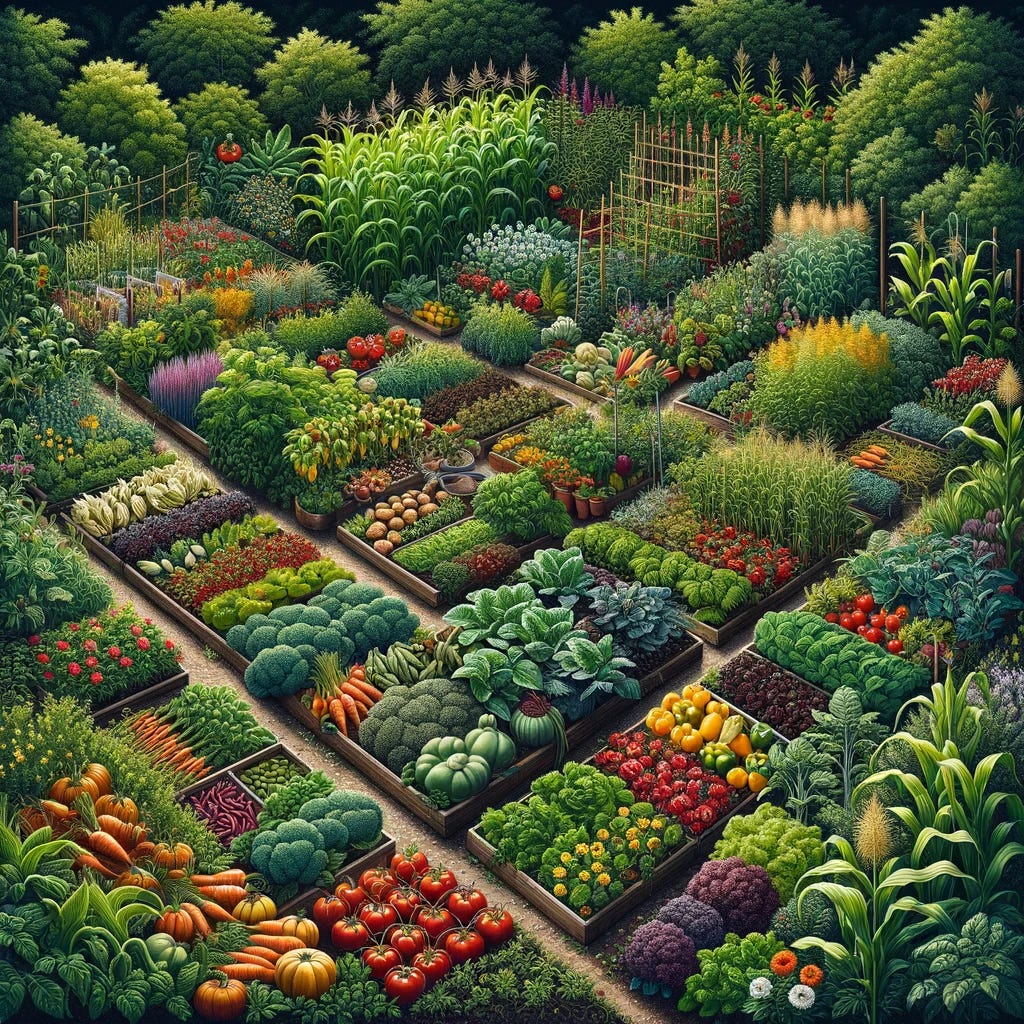Our Seed Collection.
Our self grown seed collection has formed over the last 6 years of planting seeds, growing plants and saving seeds in and around Eugene Oregon, USA; in the South Willamette Valley, in fact. The soils here are very fertile as a result of the Missoula Floods.
The Missoula Floods & Soils
The Missoula Floods: Also known as the Bretz Floods, were a series of cataclysmic floods that took place at the end of the last Ice Age, around 15,000 to 13,000 years ago. These floods played a major role in shaping the landscape and soils of the Pacific Northwest, including the Willamette Valley where Eugene, Oregon, is located.
Floodwaters and Sediment Deposition: The floodwaters carried massive amounts of sediment, including fine silt, clay, sand, and gravel, as well as larger rocks and boulders. As these waters flowed into the Willamette Valley, which was like a giant bowl, they slowed down, depositing their sediment load across the valley floor. This repeated process during multiple floods left behind thick layers of fertile sediment known as loess and alluvium.
Our Base Methodologies
We follow three simple steps in our growing techniques, or perhaps it would be more accurate to say we have three major goals in order of importance; the first being most important.
Improve the Soils.
Save Seeds (and eat most of the plants we save seeds from).
Produce Food.
As we mentioned in the previous sections, we are fortunate enough to have wonderfully fertile soils here. In 2024 we are also adding Quorum Sensing to our Landrace based growing techniques. Here is an expanded explanation of both.
Combining Landrace gardening and Quorum Sensing can significantly enhance crops' resilience to climate change effects. Let's break down how each of these concepts contributes and how they can be integrated:
Landrace Gardening
1. Genetic Diversity: Landrace gardening focuses on cultivating genetically diverse plant varieties that are well-adapted to local conditions. This diversity increases the resilience of crops to pests, diseases, and climatic variations.
2. Local Adaptation: By saving seeds from plants that thrive in specific local conditions, we can develop varieties that are better suited to our area's unique environmental challenges. This continuous selection process results in crops that can better withstand extreme weather, droughts, and other climate-related stressors.
3. Resilient Traits: Landraces often possess traits such as deeper root systems for drought resistance, better nutrient uptake, and increased tolerance to temperature extremes, making them ideal for coping with changing climates.
Quorum Sensing
1. Microbial Communication: Quorum sensing is a process where microbial populations communicate and coordinate their behavior based on their density. In the context of plants, beneficial soil microbes use quorum sensing to enhance plant growth and resilience.
2. Plant-Microbe Interactions: Beneficial microbes, such as rhizobia (nitrogen-fixing bacteria) and mycorrhizal fungi, can improve plant health through enhanced nutrient uptake, disease resistance, and stress tolerance. By encouraging these microbial interactions, plants become more robust against climate stress.
3. Biocontrol: Certain microbes can suppress soil-borne diseases through quorum sensing. By fostering a healthy microbial community, plants are less likely to succumb to pathogens, especially those exacerbated by changing climatic conditions.
Integrating Landrace Gardening and Quorum Sensing
1. Soil Health: Maintain and enhance soil health by incorporating organic matter, reducing chemical inputs, and practicing no-till farming. Healthy soil supports a diverse microbial community essential for effective quorum sensing.
2. Seed Selection: Continuously select seeds from plants that not only thrive but also exhibit strong interactions with beneficial soil microbes. Over time, this selection will lead to crops that are inherently more resilient and better supported by their microbial partners.
3. Microbial Inoculants: Use microbial inoculants, such as mycorrhizal fungi and beneficial bacteria, to boost the soil microbiome. These inoculants can kickstart beneficial quorum sensing processes, enhancing plant resilience from the seedling stage.
4. Diversified Planting: Incorporate a mix of Landrace varieties (a minimum of 12 varieties in a single area, we actually recommend 20) in our planting strategy. The genetic diversity combined with a robust microbial community creates a resilient agroecosystem capable of adapting to and mitigating the impacts of climate change.
The overall goal here is to continuously improve the seeds we send out by ensuring the soil status is optimal. We pay close attention to the ongoing progression of seed vitality and depending on the plant type, seed size over time.
This is a great piece on the importance of seed saving and improving the vitality of those seeds, from Dan Kittredge.





